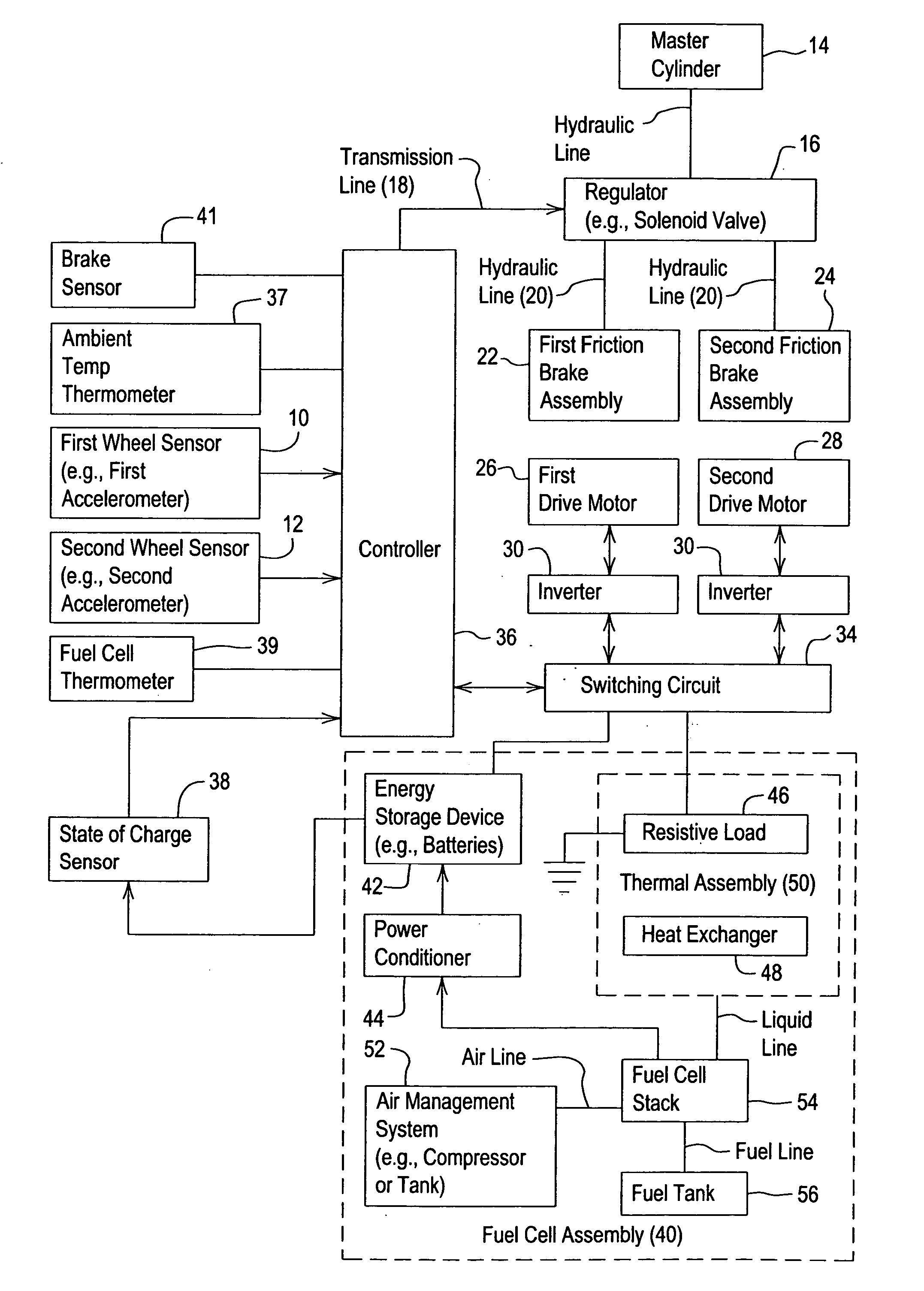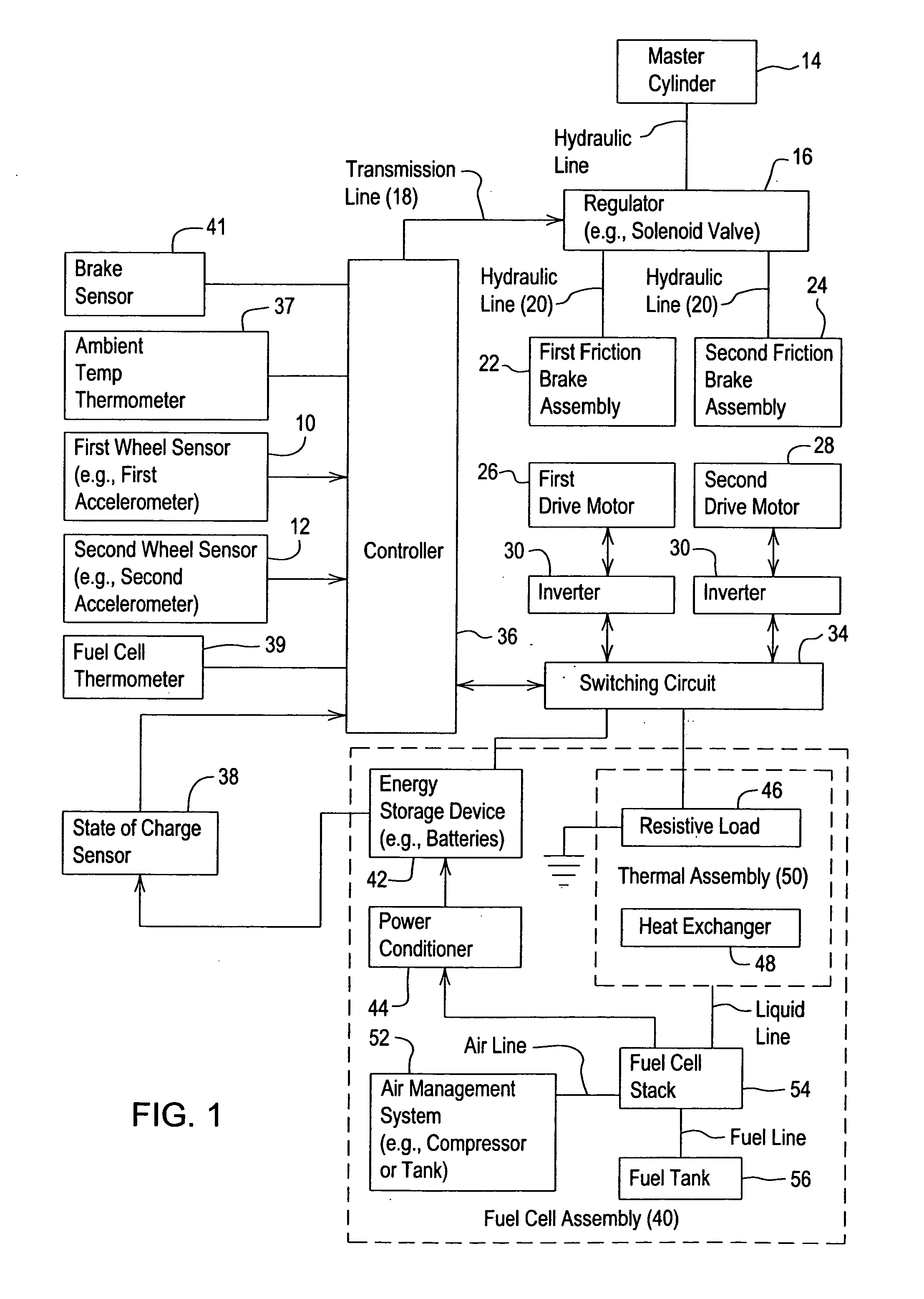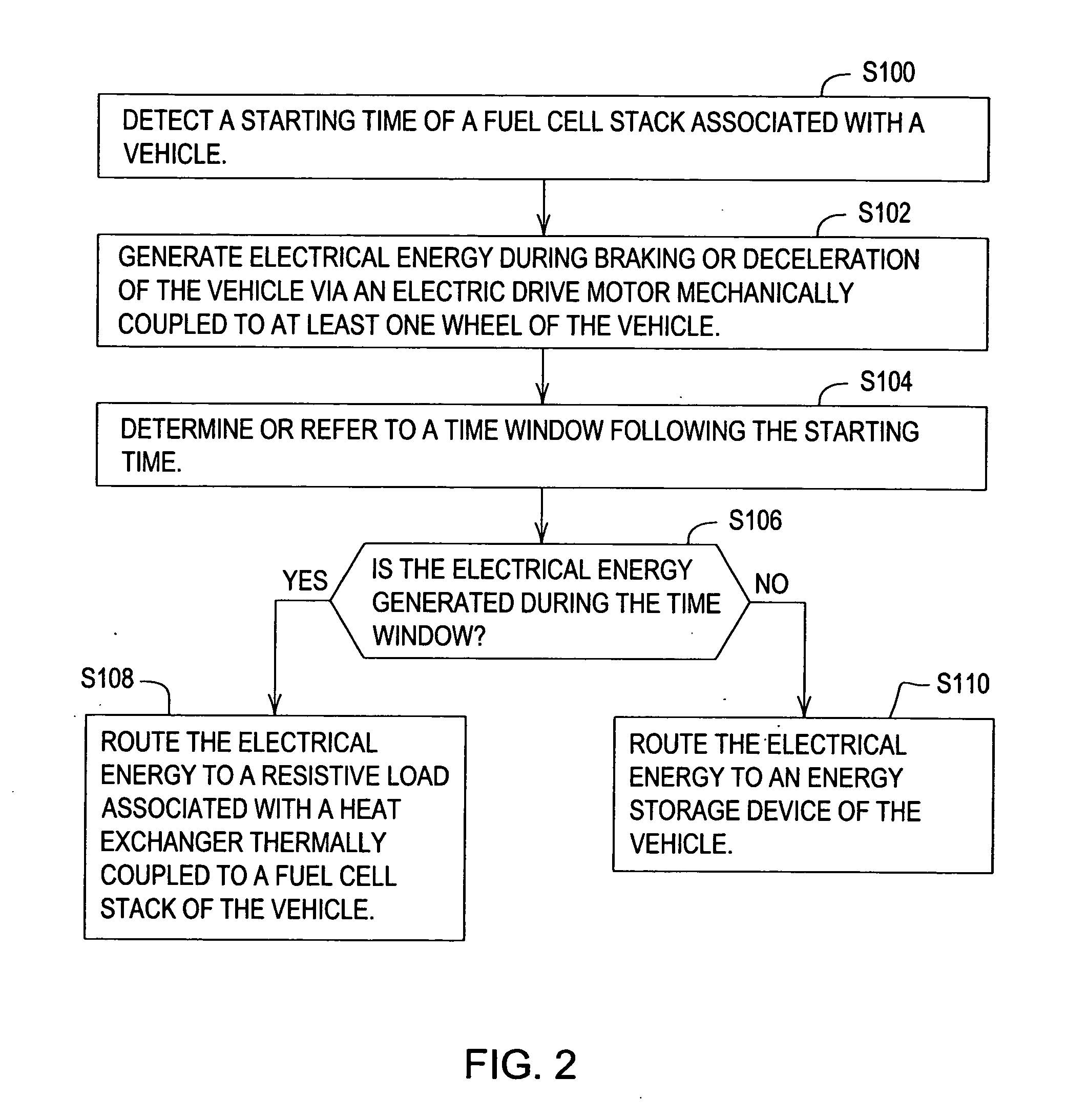Vehicular control system for regenerative braking
- Summary
- Abstract
- Description
- Claims
- Application Information
AI Technical Summary
Benefits of technology
Problems solved by technology
Method used
Image
Examples
Embodiment Construction
[0012] In FIG. 1 in accordance with one embodiment, a system for controlling a vehicle or managing electrical energy associated with a vehicle comprises a first drive motor 26 and a second drive motor 28. The first drive motor 26, the second drive motor 28, or both are coupled to wheels of the vehicle to propel the vehicle in a propulsion mode or to decelerate the vehicle in a regenerative braking mode. Regenerative braking refers to using the first drive motor 26, the second drive motor 28, or both to oppose the motion of the vehicle. During the regenerative braking mode, one or more of the drive motors (26, 28) convert the kinetic energy of the moving vehicle into electrical energy; the fuel cell assembly 40 may provide a load or energy storage device 42 to accept electrical energy generated by one or more drive motors (26, 28).
[0013] In contrast, during the propulsion mode, the energy storage device 42, the fuel cell stack 54, or the fuel cell assembly 40 provides electrical pow...
PUM
 Login to View More
Login to View More Abstract
Description
Claims
Application Information
 Login to View More
Login to View More - R&D
- Intellectual Property
- Life Sciences
- Materials
- Tech Scout
- Unparalleled Data Quality
- Higher Quality Content
- 60% Fewer Hallucinations
Browse by: Latest US Patents, China's latest patents, Technical Efficacy Thesaurus, Application Domain, Technology Topic, Popular Technical Reports.
© 2025 PatSnap. All rights reserved.Legal|Privacy policy|Modern Slavery Act Transparency Statement|Sitemap|About US| Contact US: help@patsnap.com



